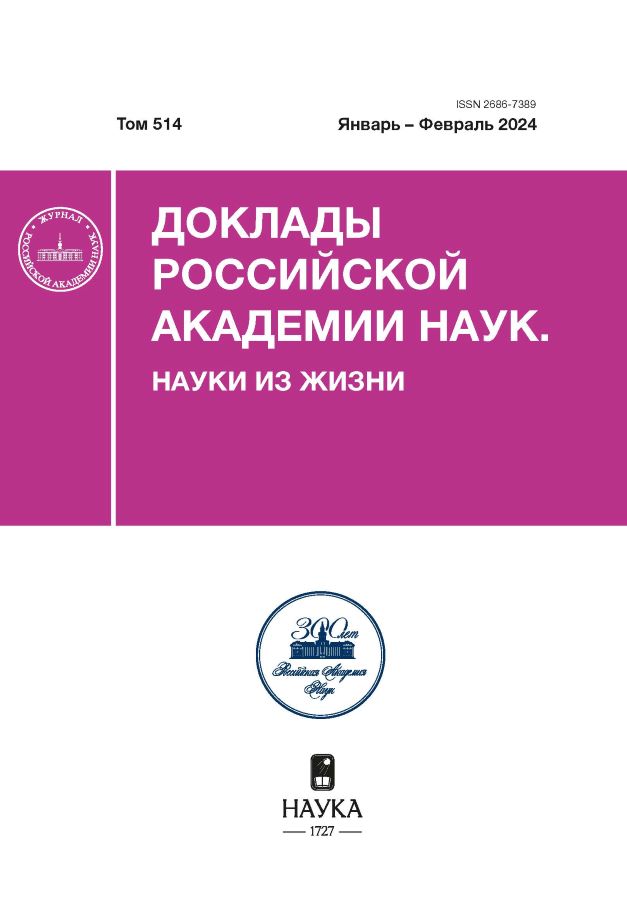N6-(5-phenylpentan-1-yl)adenine – a new non-competitive receptor-specific anti-cytokinin
- Autores: Zenchenko A.A.1, Savelieva E.M.2, Drenichev M.S.1, Romanov G.A.2, Oslovsky V.E.1
-
Afiliações:
- Engelhardt Institute of Molecular Biology, Russian Academy of Sciences
- Timiryazev Institute of Plant Physiology, Russian Academy of Sciences
- Edição: Volume 514, Nº 1 (2024)
- Páginas: 107-110
- Seção: Articles
- URL: https://kld-journal.fedlab.ru/2686-7389/article/view/651475
- DOI: https://doi.org/10.31857/S2686738924010207
- EDN: https://elibrary.ru/KGJSNF
- ID: 651475
Citar
Texto integral
Resumo
For the first time, N6-(5-phenylpentan-1-yl)adenine, a synthetic adenine derivative with a receptor-specific anticytokinin effect, was obtained. This compound exhibits a pronounced anticytokinin effect, reducing cytokinin-induced expression of the GUS reporter gene, when interacting with the cytokinin receptor CRE1/AHK4 of the model plant Arabidopsis thaliana. This effect manifests itself much weaker with the related AHK2 receptor and is not observed at all with the AHK3 receptor. We have shown that N6-(5-phenylpentan-1-yl)adenine does not bind to the ligand-binding sites of the Arabidopsis cytokinin receptors, which does not allow it to be classified as a true cytokinin antagonist. Despite the currently unknown mechanism of action, this compound may find its use as a component of plant growth regulators. Like true anticytokinins, it enhances root growth of Arabidopsis seedlings, apparently suppressing the action of endogenous cytokinins on the “root” receptor CRE1/AHK4.
Palavras-chave
Texto integral
Sobre autores
A. Zenchenko
Engelhardt Institute of Molecular Biology, Russian Academy of Sciences
Autor responsável pela correspondência
Email: kolomatchenkoa@yandex.ru
Rússia, Moscow
E. Savelieva
Timiryazev Institute of Plant Physiology, Russian Academy of Sciences
Email: kolomatchenkoa@yandex.ru
Rússia, Moscow
M. Drenichev
Engelhardt Institute of Molecular Biology, Russian Academy of Sciences
Email: kolomatchenkoa@yandex.ru
Rússia, Moscow
G. Romanov
Timiryazev Institute of Plant Physiology, Russian Academy of Sciences
Email: kolomatchenkoa@yandex.ru
Rússia, Moscow
V. Oslovsky
Engelhardt Institute of Molecular Biology, Russian Academy of Sciences
Email: kolomatchenkoa@yandex.ru
Rússia, Moscow
Bibliografia
- Spíchal L. Cytokinins – recent news and views of evolutionally old molecules // Funct. Plant Biol. 2012. Vol. 39. P. 267–84.
- Werner T., Schmülling T. Cytokinin action in plant development // Curr. Opin. Plant Biol. 2009. Vol. 12. P. 527–538.
- Gruhn N., Heyl A. Updates on the model and the evolution of cytokinin signaling // Curr. Opin. Plant Biol. 2013. Vol. 16. P. 569–574.
- Kieber J. J., Schaller G. E. Cytokinins // Arabidopsis Book, 2014. Vol. 12. P. e0168.
- Schaller G. E., Bishopp A., Kieber J. J. The yin-yang of hormones: cytokinin and auxin interactions in plant development // Plant Cell. 2015. Vol. 27. P. 44.
- Higuchi M., Pischke M. S., Mähönen A. P., et al. In planta functions of the Arabidopsis cytokinin receptor family // Proc. Natl. Acad. Sci. USA. 2004. Vol. 101. P. 8821–8826.
- Riefler M., Novak O., Strnad M., et al. Arabidopsis cytokinin receptor mutants reveal functions in shoot growth, leaf senescence, seed size, germination, root development, and cytokinin metabolism // Plant Cell. 2006. Vol. 18. P. 40.
- Spíchal L., Werner T., Popa I., et al. The purine derivative PI-55 blocks cytokinin action via receptor inhibition // FEBS J. 2009. Vol. 276. P. 244–53.
- Nisler J., Zatloukal M., Popa I., et al. Cytokinin receptor antagonists derived from 6-benzylaminopurine // Phytochem. 2010. Vol. 71 (7). P. 823–30.
- Arata Y., Nagasawa-Iida A., Uneme H., et al. The phenylquinazoline compound S-4893 is a non-competitive cytokinin antagonist that targets Arabidopsis cytokinin receptor CRE1 and promotes root growth in Arabidopsis and rice // Plant Cell Physiol. 2010. Vol. 51 (12). P. 2047–2059.
- Krivosheev D. M., Kolyachkina S. V., Mikhailov S. N., et al. N6(Benzyloxymethyl)adenosine is a novel anticytokinin, an antagonist of cytokinin receptor CRE1/AHK4 of Arabidopsis // Doklady Biochem.Biophys. 2012. Vol. 444. P. 178–181.
- Savelieva E. M., Zenchenko A. A., Drenichev M. S., et al. In planta, in vitro and in silico studies of chiral N6-benzyladenine derivatives: discovery of receptor-specific S-enantiomers with cytokinin or anticytokinin activities // Int. J. Mol. Sci. 2022. Vol. 23 (19). P. 11334.
- Zvereva S. D., Romanov G. A. Reporter genes for plant genetic engineering: characteristics and detection // Russ. J. Plant Physiol. 2000. Vol. 47. P. 424–432.
- Savelieva E. M., Lomin S. N., Romanov G. A. A modified method for quantification of cytokinin-receptor binding using isolated plant microsomes enriched with cognate transmembrane receptors // Russ. J. Plant Physiol. 2022. Vol. 69. P. 6.
Arquivos suplementares












